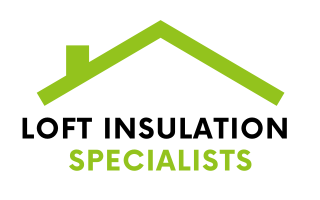Spray foam insulation was once heralded as a revolutionary solution for energy efficiency in homes. Promising excellent thermal performance and air-sealing capabilities, it gained significant traction in the 1970s, particularly in older homes looking for cost-effective insulation options. However, as with many innovations, hindsight has revealed a host of challenges associated with spray foam insulation, from structural issues to health risks. Removing spray foam insulation is not merely a cosmetic or functional decision; it’s one with profound implications for health and safety.
We will delve into the health and safety considerations tied to spray foam removal, emphasising the importance of entrusting the process to experienced professionals like loft insulation specialists.
Why Spray Foam Became Popular & Why It’s Falling Out of Favour
Spray foam insulation was initially celebrated for its ability to provide seamless coverage, reduce energy bills, and prevent drafts. Many homeowners were drawn to its promise of enhanced comfort and energy efficiency. However, over the years, the drawbacks of spray foam have become more evident. From contributing to moisture retention and timber decay to complicating property valuations, its pitfalls are now well-documented.
Moreover, modern regulations and advancements in insulation technology have provided more sustainable, safe, and effective alternatives. The issues surrounding spray foam have led many property owners to seek its removal, a complex process fraught with potential health and safety hazards if not handled correctly.
For a deeper understanding of how removing spray foam can protect property value, visit this guide.
Health Risks Associated with Spray Foam Insulation
Spray foam insulation, while effective at thermal regulation, poses several risks. These risks become even more pronounced when the insulation is being removed. Let’s explore these hazards:
1. Chemical Exposure
Spray foam insulation contains volatile organic compounds (VOCs) and other chemicals that can off-gas during its application and removal. Prolonged exposure to these substances can lead to respiratory issues, skin irritation, and in some cases, long-term health complications.
During the removal process, cutting, scraping, or sanding the foam can release dust and particulates into the air. Without proper protective gear and ventilation systems, these particles can be inhaled, posing risks to both workers and occupants of the property.
2. Mold and Moisture Problems
One of the less obvious risks is the potential for mold growth. Spray foam can trap moisture within walls and roof spaces. Over time, this damp environment becomes a breeding ground for mold, which can cause respiratory problems, allergic reactions, and even structural damage. Removal often reveals the extent of these issues, highlighting the need for immediate remediation.
3. Structural Complications
Improperly installed spray foam can adhere to structural components such as timber joists and beams. In some cases, its removal can weaken these elements, especially if the foam has trapped moisture and led to decay. This structural compromise adds an additional layer of complexity to the removal process.
For older homes, these risks are even greater. Learn more about the specific challenges of removing spray foam insulation in aging properties here.
Safety Precautions in Spray Foam Removal
Given the risks involved, a DIY approach to spray foam removal is strongly discouraged. Professional services not only ensure effective removal but also prioritize health and safety. Here’s what a professional process typically involves:
1. Proper Assessment
Before removal begins, a thorough assessment of the property is conducted. Professionals inspect the extent of the foam application, the condition of the surrounding structures, and any potential health hazards, such as mold or trapped moisture.
2. Use of Specialised Equipment
Removing spray foam requires specialised tools to minimise damage to the underlying structures and prevent the release of hazardous particles. Professionals employ equipment such as industrial vacuums, scrapers, and cutting tools designed for precision and safety.
3. Protective Measures
Protective measures include the use of personal protective equipment (PPE) for workers, such as respirators, gloves, and full-body suits. Additionally, the area is often sealed off to prevent contamination of other parts of the home. Negative pressure systems may also be used to ensure airborne particles are contained and filtered out.
4. Disposal of Waste Materials
Spray foam insulation and associated debris must be disposed of in compliance with local regulations. Professionals ensure that hazardous materials are handled and discarded safely, protecting both the environment and the occupants of the property.
The Case for Professional Expertise
Loft insulation specialists have extensive experience navigating the complexities of spray foam removal. Their expertise ensures that each project is handled with precision, prioritising the health and safety of all involved.
Professional removal is a worthwhile investment. DIY attempts often result in incomplete removal, additional damage, and the potential risk of damaging your long-term health.
For those considering removal, explore the comprehensive services offered by loft insulation specialists here.
Post-Removal Considerations
Once spray foam insulation is removed, property owners often face decisions about how to best reinstate insulation. Modern materials such as roll-out loft insulation provide a cost-effective and efficient solution. This type of insulation is easy to install, provides excellent thermal performance, and avoids many of the pitfalls associated with spray foam.
Additionally, any structural repairs or mold remediation identified during the removal process should be addressed promptly. Professionals can guide homeowners through these steps, ensuring that their properties are restored to a safe and energy-efficient condition. Learn more about our roll-out loft insulation options here.
Contact Loft Insulation Specialists Today
Spray foam insulation, once a promising solution, has become a concern for many property owners due to its potential health and safety risks. Its removal is not a task to be taken lightly, given the potential issues involved. By relying on experienced professionals like loft insulation specialists, homeowners can ensure a safe, efficient process that mitigates risks and preserves the integrity of their properties. If you need assistance, get in touch today.
